
A hairy resistance problem. Created by Sal Khan.
- Subject:
- Physical Science
- Physics
- Material Type:
- Lesson
- Provider:
- Khan Academy
- Provider Set:
- Khan Academy
- Author:
- Sal Khan
- Date Added:
- 06/01/2021

A hairy resistance problem. Created by Sal Khan.
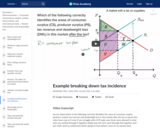
Tax incidence is a description of how the burden of a tax falls in a market. In this video we break down how to identify consumer surplus, producer surplus, tax revenue and tax incidence, and dead weight loss after a tax.
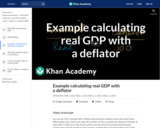
In this video explore a simplified example of how to calculate real GDP from nominal GDP using the GDP deflator. Created by Sal Khan.

Example identifying roles in a food web.

Illustrating the complexity of signal transduction with a MAPK pathway. How mutations in the pathway are linked to cancer.

Example punnet square for sex-linked recessive trait.
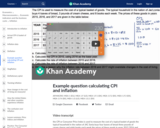
In this video, Sal walks through a practice exercise calculating the CPI and inflation.
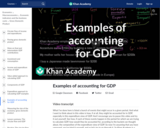
Thinking about how different types of expenditures would be accounted for in GDP. Created by Sal Khan.

Sal teaches an introduction to the Carthaginians and their roots as a Phoenician (Punic) colony.

Learn about what an exchange rate is and how to determine the cost of goods in another currency.

Comparing ETF's, open-end, and closed-end funds. Created by Sal Khan.

Examples of Thomas Jefferson, Abraham Lincoln and Franklin Roosevelt disagreeing with the United States Supreme Court.
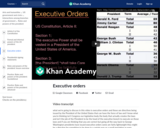
How executive orders have been used by presidents to expand their powers beyond those explicitly listed in Article II of the US Constitution.
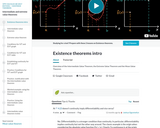
Overview of the Intermediate Value Theorem, the Extreme Value Theorem and the Mean Value Theorem.

Introduction to exocytosis!
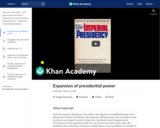
From Federalist No. 70 to the 22nd Amendment and Arthur Schlesinger's "Imperial Presidency," a discussion of expansion and checks on presidential power.
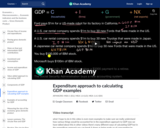
In this video, we explore how purchases of different things affect GDP, or why they wouldn't!

Expensing a truck leads to strange looking income statement. Created by Sal Khan.

This text explores the visual and performing arts (art, music, dance, theatre).
Chapter 1: Elements, Vocabulary, and Iconography of Visual Art
Chapter 2: Mediums in Visual Art
Chapter 3: Ancient Arts (Prehistoric, Ancient Near East, Egyptian)
Chapter 4: Classical Period to Middle Ages
Chapter 5: Renaissance to Realism
Chapter 6: Impressionism to Modern
Chapter 7: An Introduction to the Theater and its Elements
Chapter 8: The Greek Origins of Western Theater
Chapter 9: Technical Theater
Chapter 10: The Actor's Craft
Chapter 11: Other Theater Traditions
Chapter 12: Introduction to Music
Chapter 13: Music in the Middle Ages and the Renaissance
Chapter 14: Baroque and Classical Music
Chapter 15: Music of the Romantic Era
Chapter 16: Music of the 20th Century
Chapter 17: Introduction to Dance
Chapter 18: Elements of Dance
Chapter 19: Dance History and Styles

Learn about population growth rates and how they can be modeled by exponential and logistic equations.